Test 3: Supply Chain Ch. 9-12 Notes
Chapter 9: Logistics: Warehousing, Transportation, and Reverse Logistics - 46%
Warehousing
having the right product in the right place at the right time
Warehousing provides time and place utility
Availability necessary to give materials true value
Warehouse - Facility used to store purchases, work-in-process (WIP), and finished goods inventory
Warehousing - Function that allows a company to receive, store, breakdown, repackage, and distribute items to a manufacturing location, or finished products to a customer
Decisions driving Warehouse Management include:
Number of warehouse facilities in the network
Site selection
Layout of the warehouse(s)
Methods of receiving, storing, retrieving, and distributing products and materials
Ex.: manual, semi automated, fully automated
Primary functions of a warehouse
Receiving - Physical receipt of material, identification, inspection for conformance with the purchase order (quantity and damage), put-away, and preparation of receiving reports
Storage - The safe and secure retention of parts or products for future use or shipment
Picking - Withdrawing components from stock to make assemblies or finished goods, or to ship to a customer
Packing - Placing one or more items of an order into an appropriate container for safe shipping , and marking and labeling the container with customer shipping destination data, and other information that may be required
Shipping - Outgoing shipment of parts, components, and products. Includes packaging, marking, weighing, and loading for shipment
Does NOT include transportation
Warehouse ownership types
Public warehouses
Contract warehouses
Private warehouses
Public warehouse
A business that provides storage and related warehouse functions to companies on a short or long-term basis, generally on a month-to-month basis for a fee.
Own their own equipment and hire their own staff to manage the facility.
Fees are typically a combination of a monthly storage fee plus a pallet-in fee and a pallet-out fee.
Fees will vary based on what is being stored and/or based on:
Size and weight of the pallets
If they can be stacked
How fragile the product is
Value of goods (risk of theft)
Hazards associated with the goods
May also have some document fees and account management fees
Think of it as a hotel for inventory
Advantages
No capital investment or property taxes
Flexibility:
Can be short or long term contract
For seasonal products
Add storage capacity even on short notice
Lower costs and reduced risk
Access to special features and services:
Temperature-controlled storage
Customer Service, Inventory Ordering, etc.
Office space for customer’s sales, accounting, etc.
Disadvantages
Potential for incompatible computer systems
Specialized services may not be what is required/needed
Space may not be available when/where needed
Contract warehouse
A variation of public warehousing that handles the shipping, receiving, and storage of goods on a contract basis for a fee
Contract can be used for entire building or for a defiend portion within a building
Usually requires a client to commit to services for yearsrather than months
The fee structure may be fixed cost, cost-plus, or a combination of both.
The company providing the space handles the employees, equipment, and maintenance.
Think of it as renting an apartment for inventory
Many advantages and disadvantages of a public warehouse also apply to contract warehousing
Advantages
Services: client can obtain specialized services tailor-made to suit their needs.
Cost: can be bundled in the contract and negotiated at a lower cost.
Control: contract warehousing offers a degree of control at a reasonable price
Disadvantages
Duration: The client company is expected to enter into a contract for a specific period of time; generally three years.
Private warehouse
Private warehouse - A storage facility that is owned by the company that owns the goods being stored in the facility
Generally established by companies that have a large volume or highly valuable goods, or the need for some type of specialized storage or handling.
Can be operated as a separate division within a company
Can be co-located on-site with manufacturing, or off-site
Think of it as buying a house for inventory
Advantages
Control: Offers greater flexibility in designing the warehouse and gives users significant control over operations.
Visibility: inventory, material flow, handling, supervision, and associated costs.
Cost: Operating cost can be 15% -25% lower if the company achieves at least 75% utilization
Disadvantages
High Start-up Cost: Capital to build or buy a warehouse. Long, risky investment. Cost of hiring and training employees. Purchase of material handling equipment.
Fixed Location: Not easy to move to another location if the market changes.
Fixed Size and Costs: When volume is low, the company still assumes the fixed costs
Types of Warehouses
Consolidation
Break-bulk
Cross-docking
Consolidation warehouse
Warehouse operation that receives products from different plants or suppliers, stores them, and then combines them with similar shipments from other plants or suppliers for further distribution
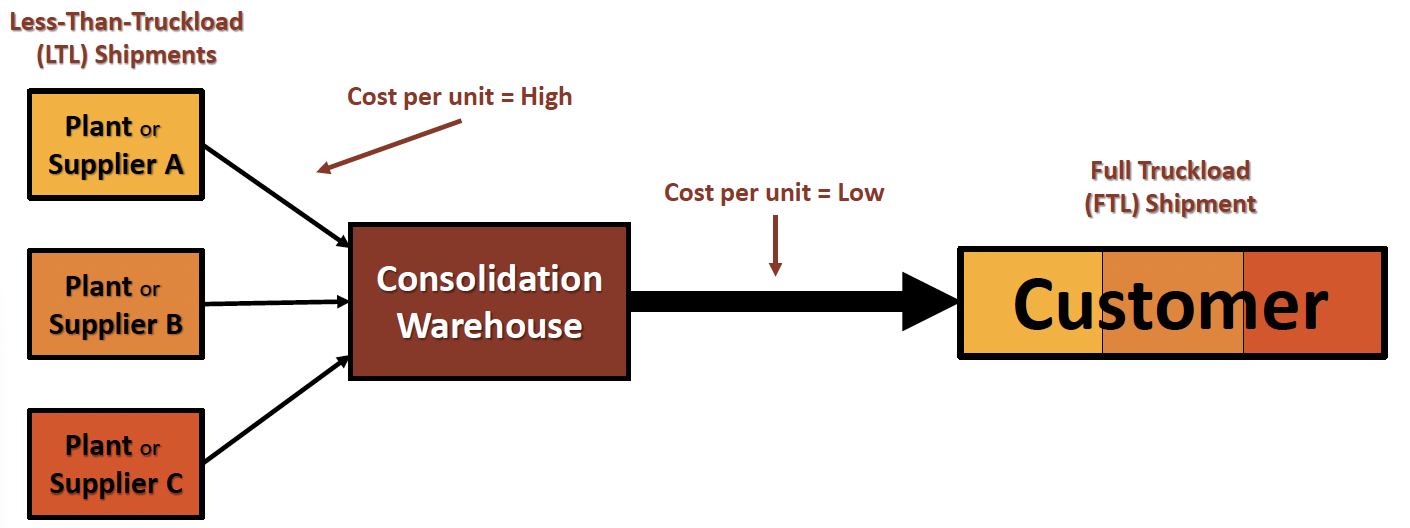
Located closer to the supply base so that smaller LTL shipments travel shorter distance and can be consolidated into larger FTL shipments traveling longer distance to the customer
Break-bulk warehouse
Break-bulk warehouse - Warehouse operation that divides full truckloads of items from a single source or manufacturer into smaller, more appropriate quantities for use or further distribution
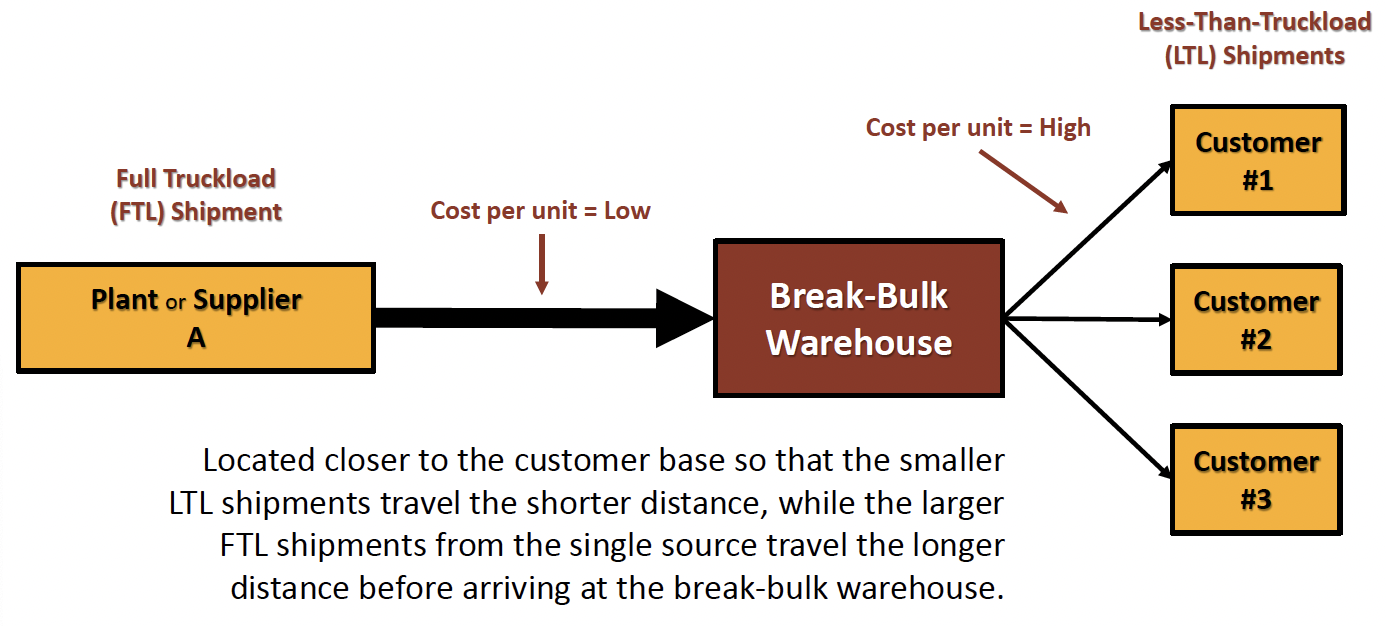
Cross-docking warehouse
Cross-docking warehouse - The logistics practice of unloading materials from an incoming truck or railcar and loading these materials directly onto outbound trucks or railcars, with little or no storage in between to reduce inventory investment and storage space requirements
Main reasons for implementing cross-docking
Provide a central site for products to be sorted and combined for delivery to multiple destinations in the most productive and fastest method possible
Consolidate: Combine smaller product loads into one method of transport to save on transportation costs.
Break-Bulk: Break down large product loads into smaller loads for transportation for an easier delivery process to the customer
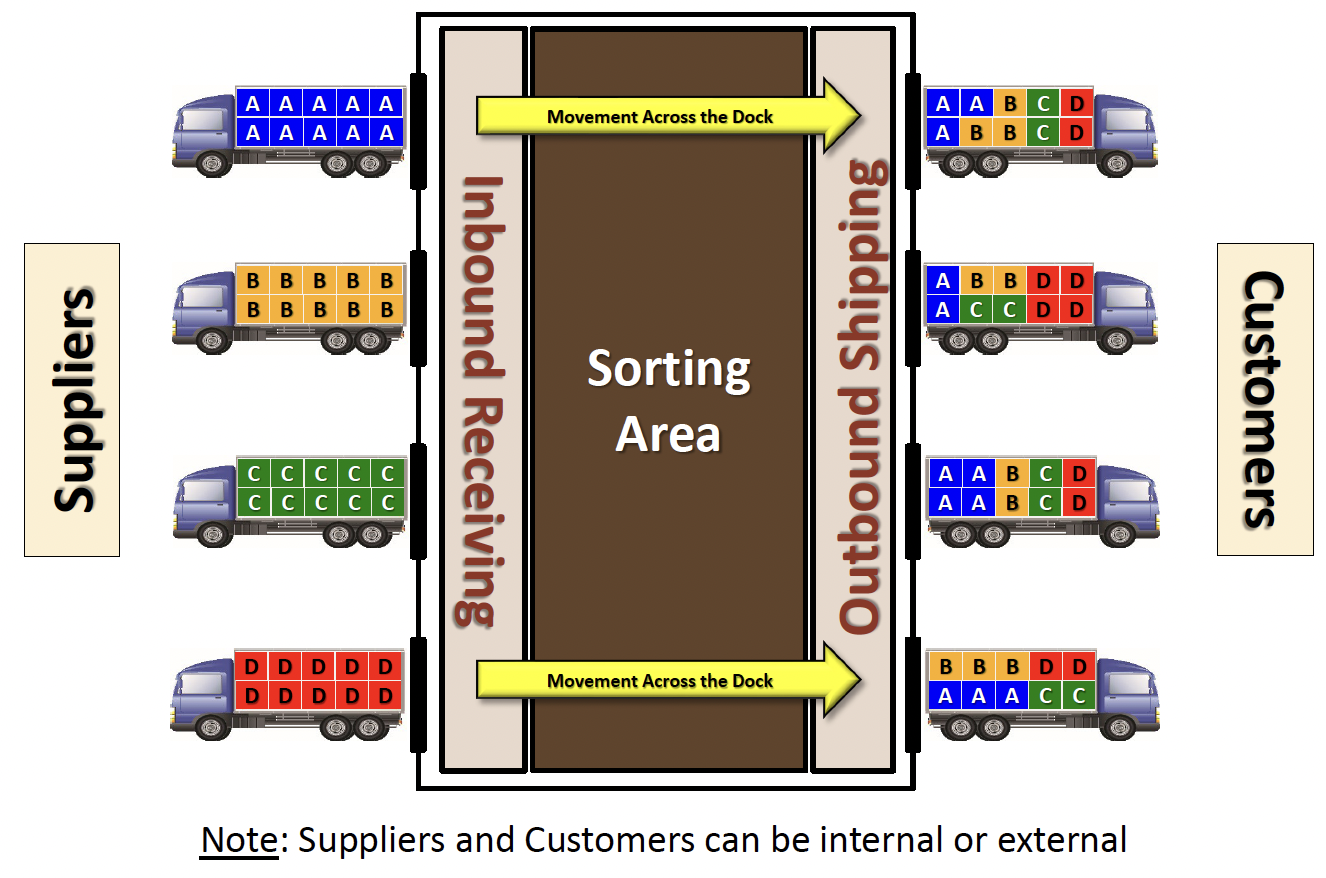
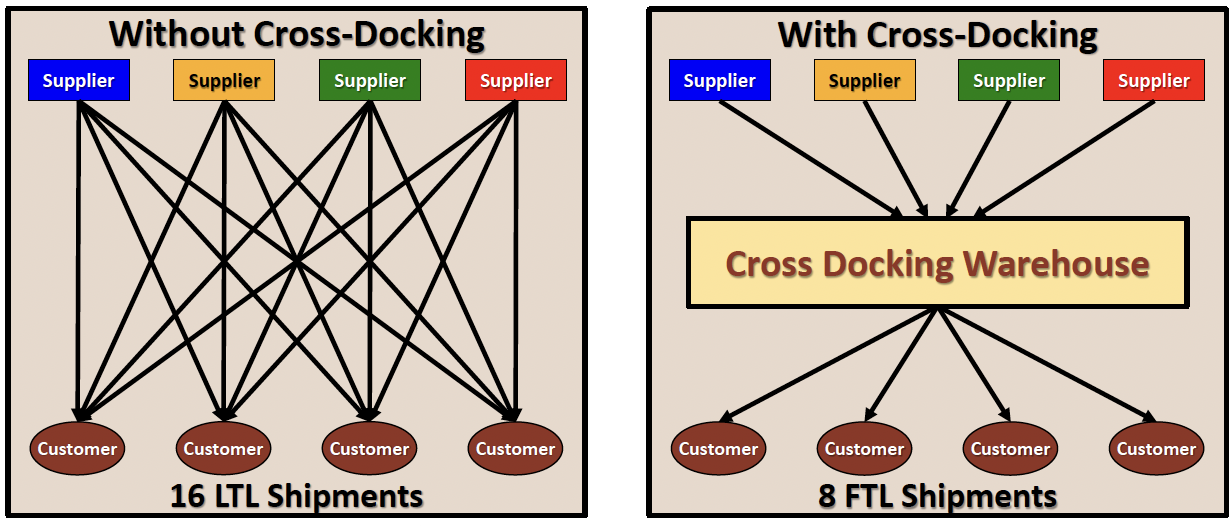
Advantages
Transportation cost savings: 8 FTL Shipments are less expensive per unit than 16 LTL Shipments.
Operational Efficiency: Warehouse operations are more efficient as the material does not have to be stored at the warehouse, moving directly from receiving to shipping.
Inventory Efficiency: As there is no storage at the warehouses, total inventory in the supply chain can be reduced
Warehouse network
Warehouse network - the number of, and the relationship between, the warehouses that a company has in their organizational structure.
fundamental questions to be answered in establishing a warehouse network are:
How many warehouses are needed?
Where should they be located?
Trade-offs that will determine how many warehouses the company needs and where they should be located are:
The level of customer service the company wants to provide
The greater the desired custom service level –the more warehouses the company may need to geographically disperse inventory.
The amount of inventory the company is willing to invest in
The more warehouses the company needs –the greater the amount of inventory the company will need to invest
Single warehouse
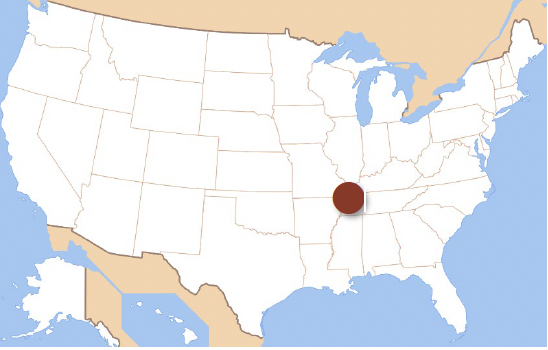
Pros
Less complicated
Operating costs and inventory will be lower
No duplication of equipment, warehouse staff, and managers
Network will be centralized and the company will have its best people, equipment and inventory systems concentrated in one place.
Warehouse can more actively focus on the needs of its customers
Cons
The single warehouse (i.e., centralized network) may take longer to deliver product to some customers who are remote from the central location
Multiple warehouses
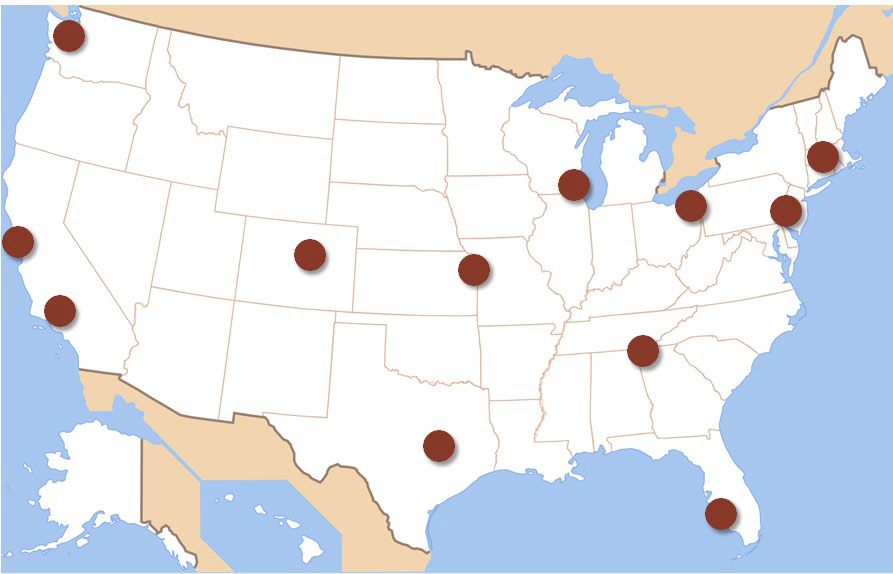
Pros
Potentially faster delivery to customers from a decentralized network that is geographically dispersed throughout the market, assuming adequate inventory in each warehouse
Cons
More complicated
Operating costs and inventory will be higher as each warehouse costs money to staff and operate. Duplication of equipment, warehouse staff, and managers
Network will be decentralized and the company will have to spread its best people, equipment and inventory systems across a larger network
Hybrid approach
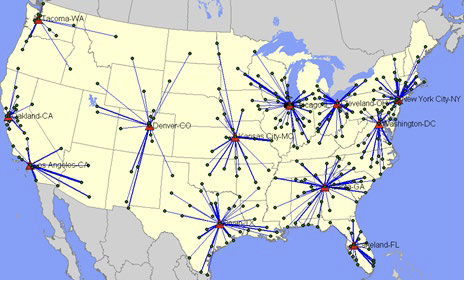
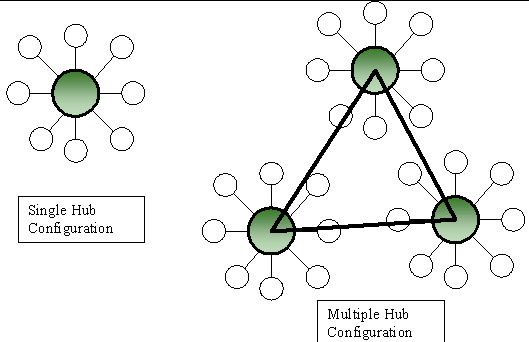
One hybrid network is a “hub-and-spoke” where there is a centralized warehouse (i.e., the “hub”) which holds most of the inventory linked to a series of smaller geographically dispersed warehouses (i.e., the “spokes”) which hold only a small amount of inventory to support their local area in the immediate time frame
The hub warehouse feeds the spoke warehouses with inventory as necessary on a regular basis
Operating costs are lower because the spoke warehouses are smaller than in a purely decentralized model
Inventory is also lower as all of the safety stock is held centrally, which generally means that less total safety stock is required because all of the risk and uncertainty is managed centrally.
Customer service is generally better than in a purely centralized model since some of the inventory is maintained closer to the customer
Warehouse network strategy
Whether a company determines that it needs one or multiple warehouses, it will also have to determine which location strategy makes the most sense for its business.
The strategy decision will be different from one business to another, depending on the nature of the business and how many customers and suppliers the company has.
The 3 main warehouse network location strategies are:
Market Positioned Strategy
Product Positioned Strategy
Intermediately Positioned Strategy
Market positioned strategy
Warehouses are set up close to customers to maximize distribution services and improve delivery.
Companies use this strategy when they have many more customers than suppliers, and the customers are spread out geographically around the market.
If the warehouses are closer to the customers the company can minimize transportation cost
There will likely be FTL shipments coming in from suppliers from greater distances, and LTL shipments going out to customers from shorter distances
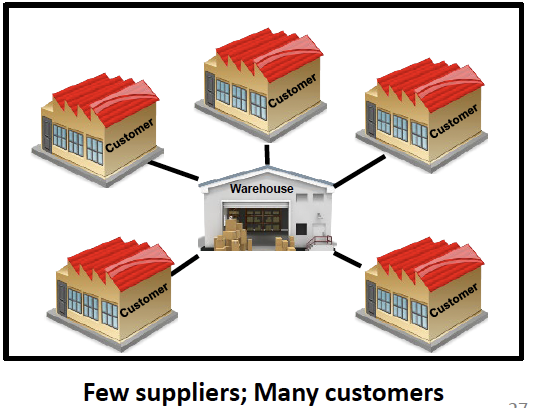
Product positioned strategy
Warehouses are set up close to supply sources to collect goods and consolidate before shipping products out to customers.
This is the reverse of the market positioned strategy.
Companies use this strategy when they have many more suppliers than customers.
If the warehouses are closer to the suppliers the company can minimize transportation cost
There will likely be LTL shipments coming in from suppliers from shorter distances, and consolidated FTL shipments going out to customers from longer distances
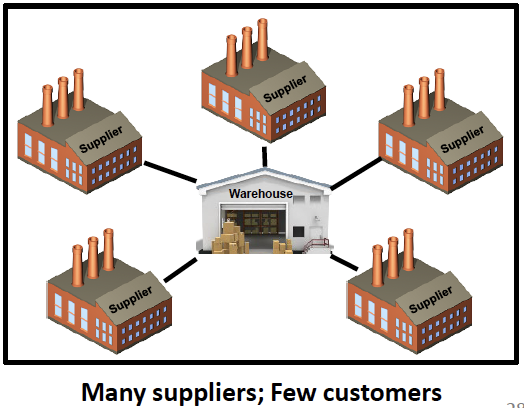
Intermediately positioned strategy
Warehouses are set up somewhere midway between the supply sources and the customers to try to balance costs, inventory and customer service.
This strategy is used when distribution requirements are high and product comes from various supply locations.
A warehouse network optimization study may be needed to determine the optimal number and location of warehouse in this strategy
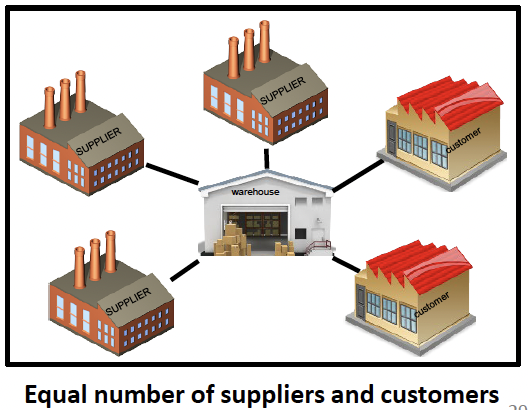
Third party logistics (3PL)
Third party logistics (3PL) company - an outsourced provider that manages most or all of an organization’s logistics requirements for a fee
Typically generate a 10-20% savings in logistics costs
Favored by small businesses
Used significantly for international logistics
Typical 3PL services
Inbound Transportation
Outbound Transportation
Warehousing
Pick and Pack
Freight Forwarding
Customs Brokerage
Customs Clearance
Order Taking
Billing and Invoicing
Inventory Auditing
Freight Bill Auditing and Payment
Advantages of 3PL
Cost: eliminate the need for a company to invest in warehouse space, technology, and staff to execute the logistics process
Logistics expertise: knowledgeable of industry best practices and latest technological developments
Efficiency: 3PLs can leverage relationships and volume discounts → lower overhead and fastest possible service
Disadvantages of 3PL
Control: company lacks direct control over logistics
Dependency: outsourcing logistics creates dependence on 3PL
Pricing: company is locked into pricing model specified in contract
Fourth party logistics (4PL)
Fourth party logistics (4PL) - an interface between the client company and multiple logistics service providers
A company will select a lead logistics partner (i.e., 4PL) that is then charged with managing the activities of all the other 3PLs being used by the company
Ideally, all aspects of the client company’s supply chain handled by 3PLs would be managed by the 4PL organization
Transportation company classification
Contract carriers - person or company who transports freight under contract to one or a limited number of shippers
Private carriers - person or company that transports its own cargo as part of a business that produces, uses, sells, or buys the cargo that is being hauled
Common carriers - person or company who transports freight for a fee that can be hired by anyone to transport goods
Exempt carriers - person or company specializing in services or transporting commodities exempt from regulation by the Interstate Commerce Act
Transportation
Transportation - the function of planning, scheduling, and controlling activities related to the mode, carrier, and movement of inventories into and out of an organization
Objectives
To maximize the value to the company through price negotiation
To make sure service is provided effectively
To satisfy customers’ needs
Modes of transportation
Mode - the way in which goods are transported
Carrier - the company that transports the goods
Truck
Most flexible mode of transportation
Carries >80% of U.S. freight
Because of interaction with other transportation modes to and from ports and warehouses
Carries nearly anything from packaged household goods to building materials to liquid petroleum, etc.
Competes with Rail and Air for short-to-medium hauls
Short haul - 0-200 miles from driver’s home terminal
Long haul - over 200 miles from driver’s home terminal
Impacted by truck driver shortage and hour-of-service rules
General freight carriers - a trucking company which handles a wide variety of commodities in standard trailers. Freight is generally palletized
Can be LTL or FTL carriers
Carry the majority of goods shipped
Does not require the use of specialized equipment
Specialized carriers - a trucking company that handles the movement of cargo that requires specialized equipment for transportation because of shipment’s size, weight, and shape
Transport commodities like liquids, petroleum, household goods, building materials, and other specialized items
Less-than-truckload (LTL) - freight does not require entire truck space
Advantages:
Can be cost effective
More available carrier options
Ideal for small businesses
Disadvantages:
Increased risk of theft/damage
Increased shipping times and delays
Full-truckload (FTL) - the transport of goods that fill up a full truck
Advantages:
Best way to transport large shipments
Ideal for high risk or delicate freight shipments
Considerably faster than LTL
Disadvantages:
Costs more than LTL
Rail
Accounts for approximately 9% of total U.S. freight spend
Competes for transportation when the distance is long and shipments are heavy or bulky
Shipments involve building materials, construction equipment, coal, gravel, sand, lumber, etc.
Aging infrastructure and equipment are an issue
Rail is slow and inflexible but has the most capability
Paired with trucks for door-to-door delivery
Rail carriers have begun purchasing motor carriers and can now offer point-to-point pickup and delivery service
Pipeline
Accounts for ~2% of total U.S. freight spend
Most reliable form of transportation
Lowest per unit cost for transportation
Limited variety of commodities
Materials are transported in liquid or gaseous state
Little maintenance needed once pipeline is running
Air
Accounts for ~5% of total U.S. freight spend
Generally fastest mode of transportation
Most expensive
Cannot carry extremely heavy or bulky cargo
Ideally items with high cost to weight ratio
Shipments involve very light, high-value goods that need to travel long distances quickly
Ex.: jewelry, fine wines, pharmaceuticals, racehorses
Half of the goods transported by air are carried by freight-only airlines. Other half in passenger planes with luggage
Paired with trucks for door-to-door delivery
Water
Accounts for ~5% of total U.S. freight spend
Includes waterways, coastal and intercoastal, and deep-sea cargo shipments
Inexpensive
Very slow and inflexible
Primarily used for heavy, bulky, low value materials like coal, grain, sand, and petroleum
However, because transport by water is so cheap, almost any item may be shipped by water including automobiles, produce, containerized cargo, etc.
Competes with rail and pipeline for some cargo shipments
Paired with trucks for door-to-door delivery
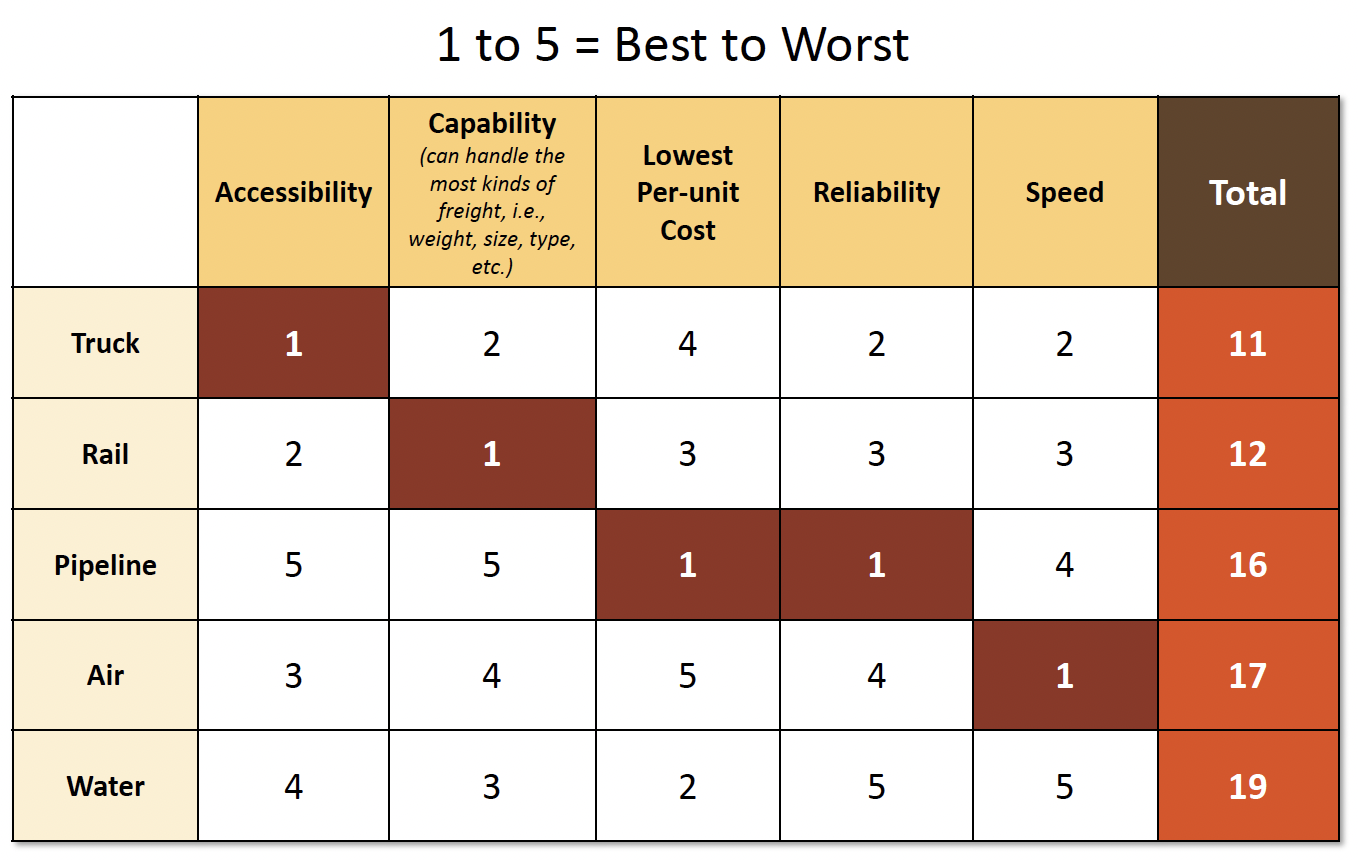
Intermodal transportation
Intermodal transportation - the use of multiple modes of transportation to execute a single transport shipment
Growing substantially because it is fairly cost-efficient and cost-effective
Most common forms:
Rail and motor carriers (i.e., trucks)
Offer point-to-point pickup and delivery service known as trailer-on-flatcar (TOFC)
Rail and water carriers
Offer point-to-point pickup and delivery service known as container-on-flatcar (COFC)
Roll-on/roll-off ships
Specifically designed to allow trucks to be driven directly on and off the ship without the use of cranes
Provides flexibility and speed
Freight
Freight: terms of sale - delivery and payment terms agreed upon between buyer and seller
Free on Board (FOB) origin - seller places goods FOB with carrier at the seller’s location and buyer pays freight costs
Ownership of goods passes to buyer when public carrier accepts goods from seller
Buyer assumes risk for in-transit loss or damage
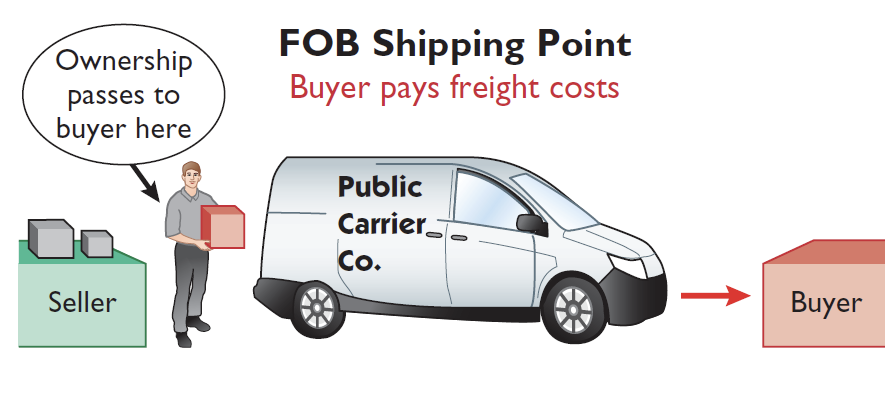
Free on Board (FOB) destination - seller places goods FOB to buyer’s place of business and seller pays freight costs
Ownership of goods remains with seller until goods reach buyer
Seller assumes risk for in-transit loss or damage

Other transportation intermediaries
Freight forwarder - consolidates LTL shipments into FTL shipments
Load/transportation broker - bring shippers and carriers together
Shippers’ association - nonprofit cooperatives which arrange for members’ shipping
Intermodal marketing company - purchase blocks of rail capacity and sell it to shippers
Reverse logistics (aka returns management)
Reverse logistics - process of moving a product from the point of customer receipt back to the point of origin to recapture value or esure proper disposal
Backward flow of goods from customers in the supply chain
All about damage control and making the process as customer-friendly as possible
5 R’s of reverse logistics
Returns - Customers return products because an item may be defective, damaged, seasonal, fail to meet expectations, be excess inventory, etc
Recalls - more complex than basic returns because they typically involve a product defect or potential hazard and may be subject to government regulations, liability concerns or reporting requirements
Repairs - Not all products that are returned are disposed. Manufacturers may identify the failure and repair, refurbish or remanufacture the product to like-new condition and return it to stock, or harvest various components for reuse
Repackaging - 95% of returned products are because customers are dissatisfied with them not because they are defective. These products are typically repackaged and returned to inventory for restock or resale.
Recycling - When products reach the ends of their useful lives and must be scrapped, companies must find safe, cost-effective and environmentally friendly ways to dispose of them. Companies can reduce costs and minimize waste
Chapter 10: Global Logistics & International Trade - 11%
Offshore factory
Offshore factory - a factory set up for manufacturing or assembly in a country where labor and/or raw materials are less expensive for eventual import back into manufacturer’s home country
Source factory
Source factory - Manufactures products at low cost but with skilled workers and significant managerial resources
Server factory
Server factory - set up to take advantage of government incentives
Contributor factory
Contributor factory - focused on product development and engineering for products that they manufacture
Outpost factory
Outpost factory - factory set up in an area with an abundance of advanced suppliers, competitors, research facilities, etc.
Lead factory
Lead factory - Source of product and process innovation and competitive advantage across the entire organization (world-class); “Go-to” factory
Global location factors
Competitiveness
Taxes and incentives
Currency stability
Access and proximity to markets
Labor issues
Right to work laws
Access to suppliers and cost
Utility availability and cost
Environmental issues
Land availability and cost
Quality of life issues
Business clusters
Trade agreements
Used to compare and contrast one potential location against another
Competitiveness
12 pillars of competitiveness
Institutions
What’s nearby
Infrastructure
Macroeconomic stability
Health and primary education
Higher education and training
Nearby universities, education system of the country
Goods market efficiency
Labor market efficiency
Financial market sophistication
Technological readiness
Market size
Business sophistication
Innovation
Taxes and incentives
Several levels of government must be considered when evaluating potential locations
Tariffs - federal taxes that are designed to protect local businesses
Countries with high tariffs discourage importing goods into the country and encourage multinational corporations to produce locally
Currency stability
Impacts business costs and consequently location decisions
Years back, Brazil had 1000% annual inflation rate. Not so easy to set prices in that currency environment
Access and proximity to markets
The trend in manufacturing is to be within delivery proximity of your customers.
Logistics timelines and costs are the concerns, so that reinforces a clustering effect of suppliers and producers to places that offer lower cost labor and lower real estate prices.
In the service industry, proximity to customers is even more critical.
You can’t service a washing machine if your technician is 3000 miles away
Labor issues
Labor availability, productivity, and skills
Unemployment/underemployment rates
Wage rates; turnover rates; labor force competitors
Right-to-work laws
28 states have laws protecting the right of employees to decide whether or not to join or support a union
Access to suppliers and cost
Supplier proximity influences the delivery of materials and the effectiveness of the supply chain
Utility availability and cost
Supply of electricity has not always kept pace with the high speed of development
China (2006) made several factories shut down for 1 day/week
In heavy industries the availability and cost of energy are critical considerations
Telecommunication costs have dropped dramatically. Many organizations now have back office operations and call centers internationally to serve the U.S. market
Environmental issues
Global warming, air pollution, acid rain are debated as being the price of industrialization
Trade liberalization creates the need for environmental cooperation
Land availability and costs
As land and construction costs in big cities continue to escalate, the trend is to locate in the suburbs and rural areas
Quality-of-life issues
You need people to work at these locations → consider quality-of-life issues in terms of maturity, sophistication, robustness, etc. and compare/evaluate:
Education
Economy
Natural Environment
Social Environment
Culture
Healthcare
Government / Politics
Mobility
Public Safety
Recreation
Business clusters
Geographic concentrations of interconnected companies and institutions
Research parks and special economic / industrial zones serve as magnets for business
Reasons for success:
Innovation and competition can be geographically concentrated
Close cooperation, coordination, and trust among clustered companies
Fierce competition among rival companies
Companies recruit from local skilled workers
Regional trade agreements
European Union (EU): [1950] following WWII, consists of
27(Brexit) 26 members countries in EuropeNorth American Free Trade Agreement (NAFTA): [1994] Removed most barriers to trade and investment among U.S., Canada and Mexico.
Southern Common Market (MERCOSUR): [1991] among Argentina, Brazil, Paraguay, and Uruguay
Association of Southeast Asian Nations (ASEAN): [1967] among 10 member countries in in SE Asia
Common Market of Eastern and Southern Africa (COMESA) [1993] among 19 member countries in Eastern and Southern Africa
World Trade Organization
World Trade Organization (WTO) - deals with the global rules of trade between nations
Main goal: ensure trade flows smoothly, predictably, and as freely as possible
WTO functions
Administering agreements
Forum for trade negotiations
Trade disputes
Monitor trade policies
Aid for developing countries
International organizations
Global location decision factors

Location evaluation techniques
Weighted-factor rating model
Compares the attractiveness of several locations along a number of quantitative and qualitative dimensions
Steps:
Identify the factors
Assign weights to each factor. The weights sum to 1.
Determine a score for each factor.
Multiply the factor score by the weight, then sum the weighted scores
The location with the highest total weighted score is the recommended location
U.S. Department of Homeland Security (DHS)
Department of Homeland Security (DHS) - government agency whose mission is to:
Prevent terrorist attacks within U.S.
Reduce America’s vulnerability to terrorism
Minimize damage from potential attacks and natural disasters
March 1, 2003: DHS assumed responsibility for securing our nation’s borders and transportation systems which straddle 350+ official ports of entry and connects our homeland to the rest of the world
First priority: prevent entry of terrorists and instruments of terrorism while ensuring efficient flow of lawful traffic and commerce
U.S. Customs and Border Protection (CBP)
Customs and Border Protection (CBP) - controls import process
Originally established in 1978
Became part of DHS in 2003
The “gateway agency” for more than 20 other government agencies each of which has some control over various aspects of international trade
Mission: to safeguard America’s borders thereby protecting the public from dangerous people and materials while enhancing nation’s global economic competitiveness by enabling legitimate trade and travel
CBP works to secure and facilitate imports arriving in the U.S., accommodating the increasing volume and complexities of international trade
“Pushing borders back”
CBP protects U.S. through active inspections at ports of entry.
CBP has a strong base of industry partnerships and technology to safeguard the American public and promote legitimate international commerce
Foreign trade zones (FTZs)
Foreign trade zones - physical areas inside the U.S. supervised by U.S. Customs and Border Protection that are considered outside of the U.S. territory
Usually located at or near a port of entry
Foreign and domestic merchandise may be moved into FTZs for operations not otherwise prohibited by law, including these Permitted Activities:
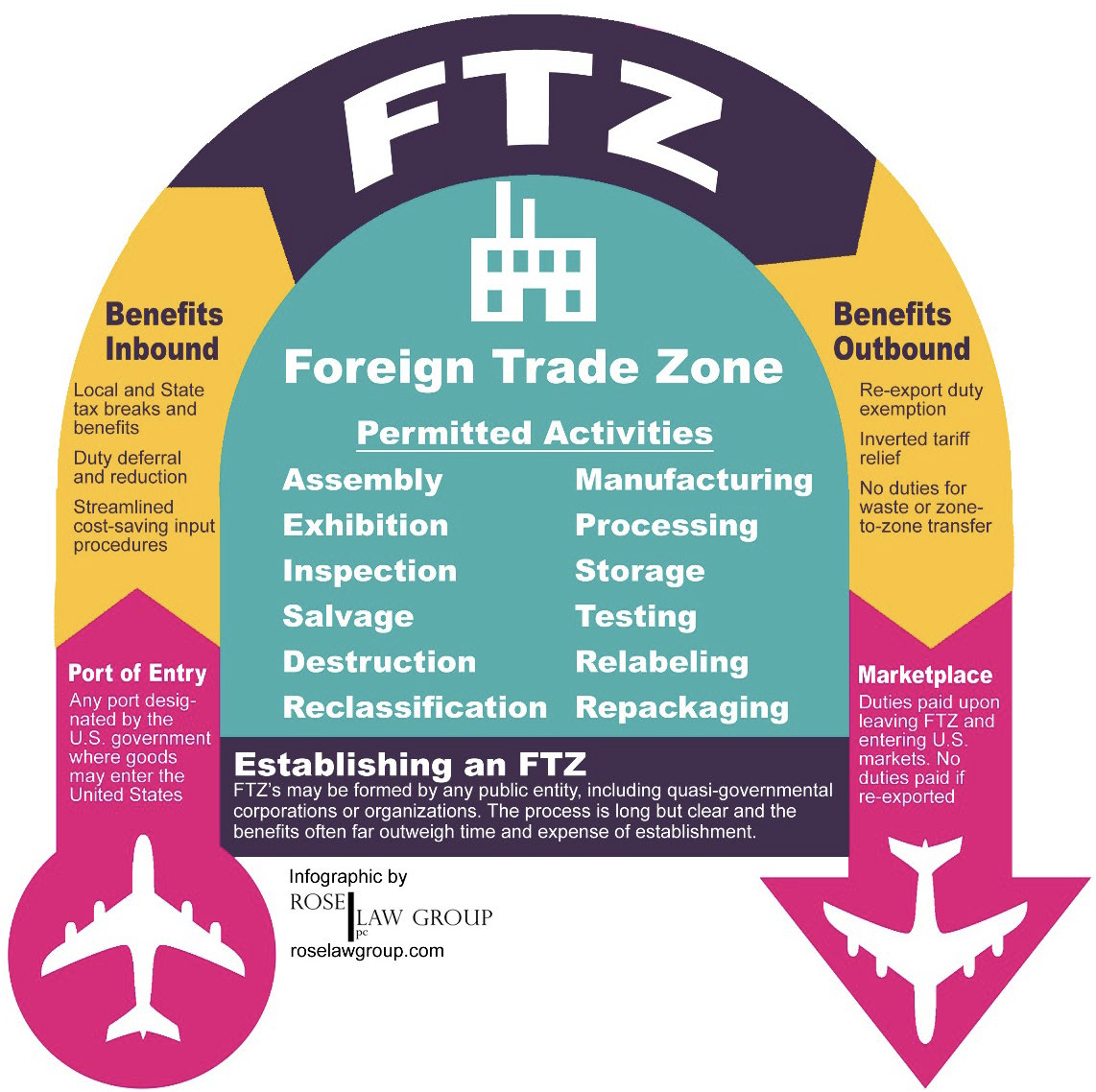
Port of entry - any port designated by U.S. government where goods may enter U.S.
Benefits inbound: local and state tax breaks and benefits; duty deferral and reduction; streamlined cost-saving input procedures
Benefits outbound: re-export duty exemption; inverted tariff relief; no duties for waste or zone-to-zone transfer
Marketplace - duties paid upon leaving FTZ and entering U.S. markets. No duties paid in re-exported
While in the FTZ, merchandise is not subject to U.S. duty or excise tax
U.S. duty and excise tax, if applicable, are only payable when the material is moved outside the FTZ for consumption
Permitted activities: assembly, exhibition, inspection, salvage, destruction, reclassification, manufacturing, processing, storage, testing, relabeling, repackaging
Foreign-trade zone sites are subject to the laws and regulations of the United States as well as those of the states and communities in which they are located.
There is no limit on the time material may remain in the zone.
Internationally, similar areas are called Free Trade Zones
Deemed exports
Deemed export - the release of technology or source code that is subject to the Export Administration Regulations to a foreign national (i.e., non-US citizen) located in the U.S.
An intentional or unintentional export of controlled technology can easily occur within the walls of your company, even if located within the borders of the United States
The release can be visual, oral, through on the job training, or via systems access, etc.
“Technology” - the specific information necessary for the development, production or use of a commodity
Usually, technology is even more strictly controlled than a commodity
The proper controls are needed to ensure that any such export occurs legally (i.e., with the proper licenses and approvals) and does not expose you or your company to penalties
Examples
Allowing a foreign national to view blueprints of a U.S. missile guidance system
Allowing foreign national to download U.S. encryption software from a laptop
Sending a foreign national U.S. software using email
Giving a foreign national access to a portal containing restricted information
Conducting a facility tour for a foreign national
Global logistics intermediaries
Customs brokers - move global shipments through customs and handle documentation
International freight forwarders - move goods to and from foreign destination
Trading companies - put buyers and sellers from different countries together and handle export/import arrangements, documentation, and transportation
Non-vessel-operating common carriers (NVOCC) - operate like freight forwarders but only use scheduled ocean liners
Chapter 11: Customer Relationship Management (CRM) - 7%
Customer relationship management
Customer relationship management (CRM) - the transformation of the people, process, and technology required to become a customer-centric organization
Customer first philosophy
Involves acquiring, retaining and partnering with selective customers to create superior value for both the company and the customer.
It provides a means and a method to enhance the experience of individual customers so that they will remain customers for life
CRM is about building and maintaining profitable long-term customer relationships beyond the one-off buy and sell transaction
By:
Focusing on customer requirements
Delivering products and services in a manner resulting in high levels of customer satisfaction
How:
Communicating with customers
Understandingtheir behavior and their requirements
Building a system to satisfy those requirements
Focus on strategically significant customers
Not all markets and customers are equally important
Building relationships with customers that provide little value can be counterproductive
Relationships should be built with strategically significant customers that are likely to provide the most value for the effort
Strategically significant customers:
Customers with high life-time value
i.e., customers that will constantly buy the product(s) or use the service(s) in the long-term
Customers who serve as role models or benchmarks for other customers
Customers who inspire change in the supplier and/or the supply chain
Comes from relationship building and trust
CRM is not for every customer
Some customers don’t want to be committed to every brand and/or relationship
Key tools and components of CRM
Personalizing customer communications
Understanding customer behaviors and preferences, allows a firm to customize communications aimed as specific groups of customers and is likely to result in greater levels of sales
When a company communicates with their customers they need to use the customer’s “language” and communicate with them in a meaningful way
Communication that is personalized sends a message to the customer that the company cares about them
It is a powerful way to differentiate the company from its competitors and it helps to build customer loyalty
Clickstream - tracking how a customer navigates a website can help tailor a website’s images, ads or discounts based on past usage of the site
Cross-selling and up-selling
Cross-selling - occurs when a company sells an additional related or complementary product or service to an existing customer after the initial purchase
Ex.: "Would you like fries with that?"
Ex.: If you're buying an item on Amazon.com, you may be shown other similar items to the one you are looking at, or companion products to the item that you are considering
Up-selling - involves persuading a customer to buy a more expensive item or upgrade a product or service to make the sale more profitable. It also involves selling the customer extra features or add-ons to the product they are already buying or considering
Ex.: “Would you like to super-size your order?”
Relationship marketing or permission marketing
Relationship/permission marketing - an approach to selling products and services in which a customer explicitly agrees in advance to receive marketing information. Customers self-select the type and time of communication they want
Ex.: An “opt-in” e-mail, where a potential customer signs up in advance for information about certain products or services. The customer is giving permission to the company to provide them with marketing and sales information
Permission marketing is about building an ongoing relationship of increasing depth with customers
Permission marketing does not typically create immediate sales, but rather grabs a customer's attention and preserves a business relationship
Customer defection analysis
Customer defection analysis - the process of analyzing the customers who have stopped buying to determine why
Finding a new customer costs 5-10x as much as keeping an existing customer
Churn reduction
Churn - the process of customers changing their buying preferences because they find better or cheaper products and services elsewhere
Churn reduction - all of the efforts companies develop to stop losing customers to the competition
Customer Defection Analysis and Churn Reduction go hand-in-hand to determine why customers leave and finding ways to retain them
5% improvement in customer retention can result in a 75% increase in profits
Customer lifetime value (CLV)
Customer lifetime value (CLV) - a prediction of the net profit attributed to the entire future relationship with a particular customer
Some customers are worth a lot more than others, and identifying your key or top tier customers can be extremely valuable to your business.
CLV is an important metric for determining how much money a company is willing to spend on acquiring new customers and how much repeat business a company can expect from particular customers
Chapter 12: SCM in the Service Industry - 37%
Overview of Service Operations
SCM in the Service Industry
How does supply chain management in the service industry differ from supply chain management in manufacturing?
The tangibility of the end product: Services are generally not tangible
The involvement of the customer in the service process: Customers are much more directly involved in the service industry
The assessment of quality: Quality is assessed differently in the service industry
The labor content: There is a much higher ratio of labor to materials in the service industry
The facility location considerations: Services are largely provided very near where customers are located and heavily impacted by location decisions.
Types of services
Pure services - offer very few or no tangible products to customers
Ex.: consulting, storage facilities, training/education, etc.
End product services - offer tangible components along with the service component
Ex.: restaurants; food along with the dining service)
State utility services - directly involve things owned by the customer
Ex.: car repair, dry cleaning, haircut, and healthcare
Differences between goods and services
Services cannot be inventoried (in most cases). Typically, services are produced and consumed simultaneously.
Services are often unique to the customer
Ex.: insurance policies, legal services, tax preparation, etc.
Services have high customer interaction
Services are decentralized. Due to the inability to inventory or transport most services, they must be located near to the customer base
Managing the service supply chain
Service strategies
Cost leadership: lowest cost service provider
Requires large capital investment in the state-of-the-art equipment and significant efforts to control and reduce costs
Ex.: auto diagnostics software, route planning to reduce windshield time, UPS optimization, etc.
Differentiation: unique service created based on customer input and feedback
Ex.: Sunday car servicing at Hyundai, Ford, etc. Being different from another local dealer. This may be helpful in selling a car to someone who can’t take off work on a Monday-thru-Friday when their car needs repair
Focus: serve a narrow niche better than other firms
Ex.: grocery shopping for you, mechanic specializing in Volvo or Porsche repair, custom stereo in your house or car
Service delivery system
Delivery of service - a continuum with mass produced, low-customer contact systems at one end, and highly customized, high-customer-contact systems at the other
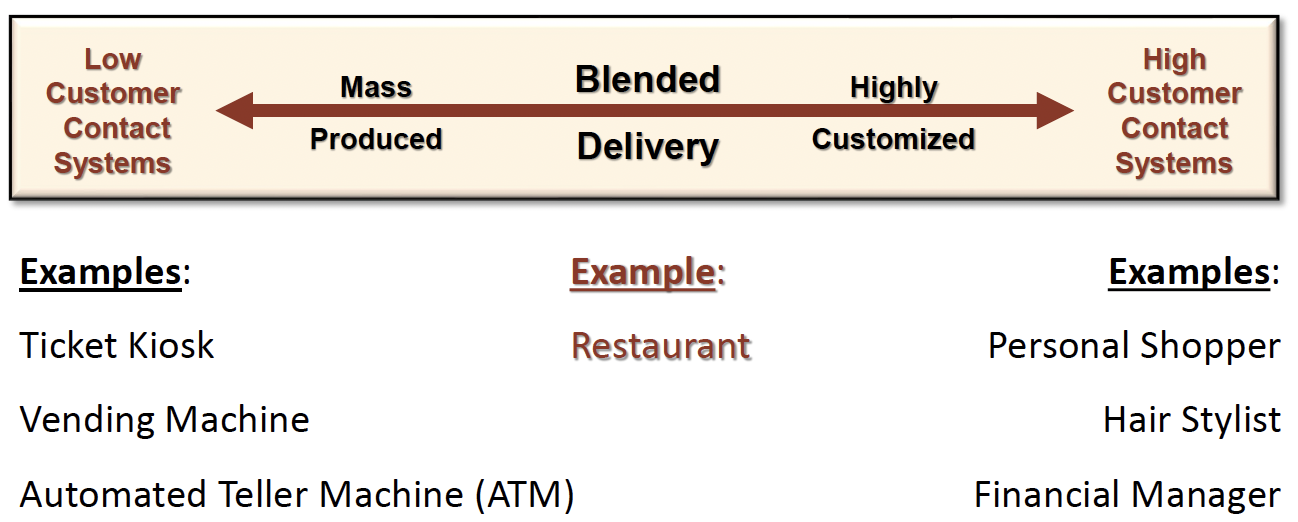
Blended delivery system - involve both high and low customer contact systems
Ex.: restaurant: front of house staff tend to be customer-centric while back of house staff generally do not have contact with customers
Service delivery systems may be designed to keep these separate in order to use various and different management techniques to maximize performance in each area
Bundle of service attributes
Bundling services can deliver more than expected and enhance customer satisfaction
Explicit services - availability and access to the service, consistency of service performance, comprehensiveness of the service, and training of service personnel
Ex.: safe deposit boxes, loans, etc.
Implicit services - attitude of the servers, atmosphere, waiting time, status, privacy, security, and convenience
SUPPORTED BY:
Facilities and Equipment - location, layout, architectural appropriateness, equipment, decoration
Ex.: drive-up tellers, ATM’s
Facilitating Goods - tangible elements that are used or consumed by the customer or the service provider along with the service provided
Ex.: deposit forms, statements
Service response logistics
The primary concern of service response logistics is the management and coordination of the organization’s service activities
The four primary activities of Service Response Logistics are managing:
Service Capacity
Waiting Times
Distribution Channels
Service Quality
Since services cannot be inventoried and customer demand must be met, Demand Management Tactics are also important
1. Service capacity
Service capacity - expressed as the number of customers that the service provider can service at any one time
the number of customers per day, per shift, per month, or per year, that the company’s service system is designed to serve
Regardless of the specific breakdown, it's The planned capacity for the service environment
Service providers are 100% reliant on the customer to create the flow of demand, which has a direct impact on their ability to fully utilize capacity
Challenges:
Customer arrivals fluctuate and service demands vary.
Customers are participants in the service and the level of congestion impacts on perceived quality.
Idle capacity is a reality for services
Inability to control demand results in capacity measured in terms of inputs
Ex.: number of hotel rooms available rather than the number of guest nights
Examples
Airline capacity: number of seats vs. booked passengers
Restaurant capacity: number of tables
How many servers will I need?
Maître d’s / Hostesses?
Chefs / Kitchen staff?
“Bus-boys” / Dish-washers?
Hotel capacity: number of rooms
How many people will I need to :
Check-in / Check-out the customers
Tend the bar
Clean the rooms
Handle the luggage
Provide room service
Service capacity utilization formula
Capacity utilization = Actual customers served per period / Capacity
Managing Service Capacity
Level demand strategy - Capacity remains constant regardless of demand. When demand exceeds capacity, queue management tactics deal with excess customers
One line instead of many lines at a Bank or at McDonald’s so its 1st come 1st serve
Numbers at the deli in the grocery store. Note: This technique does not work well in a Hospital Emergency Room
Chase demand strategy - capacity varies with demand → you can handle fluctuations but must take appropriate actions prior. Need to have options
Open up additional line(s)
Call in additional off-shift workers to meet increased demand
Demand exceeds capacity
If the demand exceeds capacity, and the provider does not currently have the capacity to serve all of the customers, there are three basic alternatives:
Turn customers away and not service them, i.e., lose business.
Make them wait until service is available for them
Increase service capacity: the number of service personnel and the associated infrastructure to provide the service
Hiring, training, supervising, and equipping personnel is costly
~75% of operating costs
Situation makes forecasting service demand critical, particularly because services cannot be inventoried or carried out in advance
To minimize the cost of hiring and laying off employees, the following strategies deal with periods of high demand
Using cross-trained employees so that they can help on the task that is busy at the moment. Flow the people to the work
Using part-time employees (e.g., during the holiday season)
Using customers, i.e., “hidden employees” (e.g., self check out)
Using technology (e.g., Scanning documents in insurance industry for use in multiple departments as necessary)
Using employee scheduling policies (e.g., nurses have to work alternating holidays)
Capacity exceeds demand
If capacity exceeds demand, instead of disposing of excess capacity (e.g., laying off personnel), find other uses for the available capacity
Do other jobs when it’s not busy
Ex.: in a restaurant you might have workers clean the bathrooms, prep for the dinner rush, etc.
Do training or cross training
Use demand management techniques to shift demand from peak demand periods into non-peak periods by offering incentives like discounts and special sales
Ex.: early bird specials, 20% off from 9am to noon, etc.
Service capacity
Long-range - capacity can be used as a preemptive strike where the market is too small for two competitors to co-exist
Ex.: first to build a luxury hotel in a mid-sized city may capture all the business
A strategy of building ahead of demand is often taken to avoid losing customers
Short-range - the lack of short-term capacity planning can generate customers for the competition
Ex.: if restaurant staffing is inadequate to handle the volume of customers arriving at the restaurant, customer will likely go elsewhere
Balance - capacity decisions must be balanced against the costs of lost sales if capacity is inadequate… or against operating losses if demand does not reach expectations
Queuing systems
Queue management system - used to help control the flow and prioritization of people expecting to receive a service
Queues can be utilized for almost any situation where large numbers of people are gathering or waiting in line to purchase tickets, enter a facility, etc.
Queues are common in airports amusement parks, and retail
length of time customers are willing to wait for service before leaving/lowering their perception of the quality of the service company is directly related to the effectiveness of the queueing system being used

Types of queues
Structured queues - queues are set in a fixed position such as a supermarket checkout line, airport or bank. In some cases queue management systems can be structure with numbers such as “take-a-ticket number” allowing a person to walk around and wait for their number to be called
Unstructured queues - when people form queues somewhat informally in various directions and locations. These types of queues are seen in retail stores, at an airport waiting for a taxi, people waiting for an ATM machine, etc.
Mobile queues - queues formed virtually with technology. Customers can use technology such as a smartphone to place their name in a real-time electronic queue such as at a restaurant. This type of queuing has provided a great deal of flexibility and allows for reduced stress level on the part of the customer
Queuing system input
Customers are the demand source for services and their arrival triggers the start of the service experience.
Customers generally appear in predictable arrival patterns
Ex.: dinner rush at a restaurant

Queuing system
Queuing system assumptions
Most queuing models assume that customers enter the queue, and stay in the queue until served. That may not be true:
Balking - when a customer refuses to join the queue
Reneging - when customers decide to leave the queue
Queuing models assume there is an infinite length of a queue
Queuing system characteristics
Queue discipline - describes the order in which customers are served
Queuing can be comprised of single or multiple lines
Queue lines can be serviced by either a single server or multiple servers. Multiple servers can also act in series or in parallel
Queuing system design
Single channel, single phase, single server
Ex.: customer to service representative

Single channel, multiple phase - multiple servers acting in series
Ex.: customer, to hostess, to wait staff, to chef

Multiple channel, single phase, single server
Ex.: customer, to one of multiple available service representatives

Multiple channel, multiple phase, multiple servers acting in parallel
Ex.: customer, to one of multiple fast food order takers, to fast food cook

3. Managing distribution channels
Distribution channels involve traditional methods and new channels that incorporate new internet technologies
Eatertainment - combines restaurant and entertainment elements
Ex.: Medieval Times, Rainforest Café, Dave & Busters
Entertailment - combines retail with entertainment elements
Ex.: Mall of America has a ferrous wheel, rock climbing wall, fashion shows, play area
Edutainment (infotainment) - combines learning with entertainment to appeal to customers looking for substance along with play
Ex.: Epcot Center, Liberty Science Center
Franchising - allows business to expand quickly in dispersed geographic markets, protects existing markets, and builds market share and facilitates business when owners have limited financial resources
Ex.: fast food restaurants, temp agencies, tax businesses
International expansion - operate / partner with firms familiar with the region’s markets, suppliers, infrastructure, government regulations, and customers
Must address language and cultural barriers
Internet distribution strategies
Internet retailing is growing faster than traditional retailing
Primary advantages of the Internet include the ability to offer convenient sources of real-time information, integration, feedback, and comparison shopping
Pure strategy - many retailers today sell products exclusively over the internet
Ex.: Amazon
Mixed strategy - using internet as a supplemental distribution channel
Ex.: Walmart
5 dimensions of service quality
Reliability - consistently performing the service correctly and dependably
Responsiveness - promptly and timely service
Assurance - ability to convey trust and confidence to customers
Empathy - providing caring attention to customers
tangibles - the physical characteristics of the service including facilities, servers, equipment, associated goods, and other customers